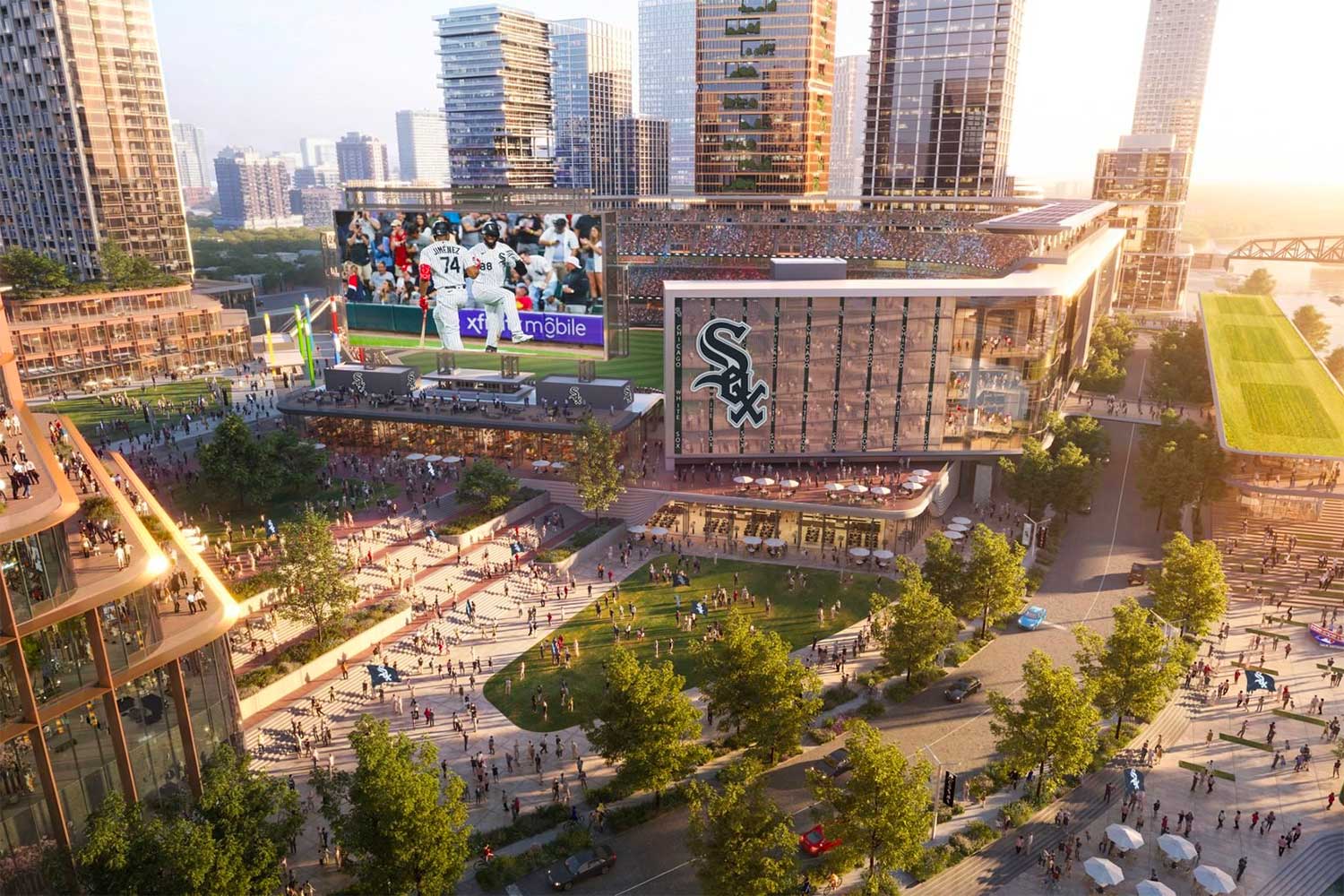Hey team, and welcome back to one5c. It might not feel quite like spring yet in much of the U.S., but we’re already getting there in my mind. Major League Baseball pitchers and catchers are at spring training, which got me thinking about the impact of America’s pastime. I could rail against the “compostable” cups stadiums pour brews into, or teams crisscrossing the country in airplanes, but today Glorie is digging into fan transport, which is one of the biggest sources of emissions in professional sports.
Share it with the sports (or transit) lover in your life. —Corinne
WHAT WE’RE INTO THIS WEEK
By Sara Kiley Watson

Accountability check
The dark side of the bag ban
Swapping products for sustainable options is never perfect; take, for example, the recent revelation that paper straws release forever chemicals. A similar bit of whiplash is unfolding in California, this time with plastic bags. The Golden State was the first in the union to ban single-use plastic bags way back in 2014, but a new report by consumer advocacy group CALPIRG found that between 2014 and 2022, plastic waste jumped 47%. That’s thanks to the transition to selling thicker reusable plastic bags, experts recently told the LA Times. All this goes to show that if you’re going to buy something “reusable,” you really do need to use it a whole bunch; in the case of a heavier-duty polypropylene grocery bag, U.N. estimates put the resource break-even point at 20 trips to the store, but they’re extremely durable and can last years.
Cause for optimism
Rewilding defunct golf courses
Golf courses are resource hogs. In the U.S., they drink up 1.5 billion gallons of water and require around 100,000 tons of fertilizers a year. We also have a lot of them—16,000, in fact. This oversupply of emerald green links has led to hundreds of closed courses across the country. That’s kinda good news: Defunct links can be rewilded into public-use, ecologically restored, sustainable havens. Take the San Geronimo Golf Course: The 157-acre plot was purchased by the Trust for Public Land in 2018, and restoration efforts, including removing barriers that kept endangered trout and salmon from breeding and migrating through the region, are progressing. Only 28 courses have undergone such a transformation, but The New York Times reports that the movement is picking up steam.
Greenwatch
Reminder: Natural gas is not ‘green’
As the energy transition forges ahead there will always be someone—be it utility, regulator, or third-party “certifier”—that will try to sell natural gas as “green,” or at least greener than coal or oil. Now, a group of senators is imploring the Federal Trade Commission to crack down on natural gas greenwashing as the agency works to release its updated Green Guides, a suite of docs that set parameters for how marketers can talk about their eco-ness. Natural gas (aka methane) is responsible for 30% of the global temperature rise and releases carbon dioxide when you burn it for power, so any third-party claims about climate friendliness are beyond suspect. In fact, one report found numerous pollution spikes near plants private certifiers had dubbed “clean” or “responsible.”
Consume this
Climate action is anti-colonialism
It might not seem immediately obvious why we’d recommend Revolusi, a book on Indonesian independence, as a climate read, but Belgian historian David Van Reybrouck has a point to make: Reckoning with colonial rule isn’t only about addressing the wrongs of the past, he says, but also acting to correct the unequal impacts of human-caused climate change in the here and now. “A mayor who makes her city fossil-free by 2040 has done more against colonialism, racism, and discrimination than another mayor who decolonises all the street names, statues, and schoolbooks while keeping the city running on fossil fuels,” he tells The Guardian.
Mic-drop climate stat

How much carbon dioxide it takes to make 100 grams of protein worth of a new kind of lab-grown beef rice. To produce the same amount of real beef protein demands nearly 50 kilos.
Cultural climate
A parking-free White Sox stadium is quite the pitch
By Glorie Martinez

The White Sox have played ball in Chicago’s Bridgeport neighborhood for more than a century. Now, the team could be on the verge of a major transformation. Developers recently released renderings of a potential new home for the team—a shiny new stadium surrounded by a ballpark village in the heart of the city’s South Loop neighborhood. Notably absent from the new stadium plans? Parking spaces. With several rail and bus lines and even a water taxi stop nearby, fans will be able to access games without the need for cars—or so one hopes.
The stadium won’t be the first major arena without parking in the U.S., but it will be one of the few with good access to public transportation. And it is part of a larger trend toward building stadiums within cities instead of pushing them to the outskirts. In fact, just a few days after developers released their renderings, the Kansas City Royals rolled out plans for a central site with no additional parking for their next home.
Why we’re excited
Parking lots cover about 10% of the surface area in U.S. cities and cause a host of negative environmental effects. What’s worse: Those surrounding arenas and stadiums tend to sit unused for large chunks of the year. The sprawling cement often overtakes plant and animal habitats, creates stormwater runoff that pollutes nearby bodies of water, and contributes to the urban heat island effect. They also contribute to car culture and, in the case of stadiums, disincentivize fans from using public transit. That’s why stadium developers focused on lowering the footprint of venues are increasingly nudging spectators toward trains, subways, and buses—along with ride shares and bicycles.
In Chicago, surface transit is the third-largest contributor to emissions, and passenger vehicles make up 80% of that total. Plans for the White Sox propose the transformation of Guaranteed Rate Field (née Comiskey Park), the team’s current home, into a mixed-use development. The current sea of parking lots surrounding the ballpark would give way to green spaces and amenities.
What happens now?
Other sports franchises across the country—including the St. Louis Cardinals to the Green Bay Packers—have seen success with similar projects that create neighborhoods around their stadiums. Developers predict the new White Sox stadium, in particular, will generate $4 billion in yearly revenue, create more than 5,000 jobs, and draw about 5 million visitors annually.
But the project isn’t without its challenges and criticisms. Funding for the new stadium has yet to be secured, and there are still questions about how much the project could impact traffic, noise pollution, and the nearby Chicago River. Some development experts, including Emily Talen, professor of urbanism at the University of Chicago, are also concerned with who’s holding the purse strings. “Shifting away from parking lots is a huge positive shift,” she says. “But I question why this developer has to be in control of all these things. If it’s developer controlled, it’s not really public space.”
Want to save the world with your tastebuds? Subscribe to Cool Beans, the sustainable eating newsletter from one5c.
